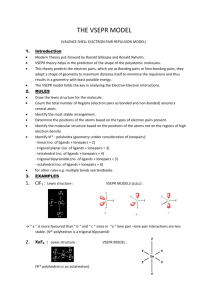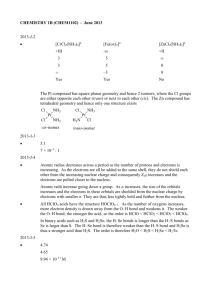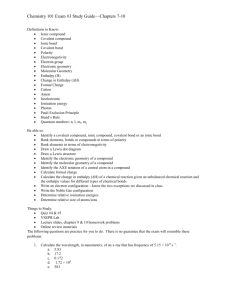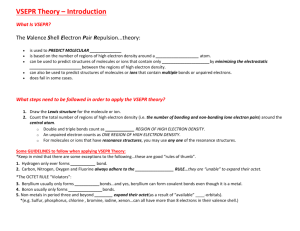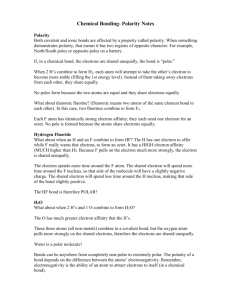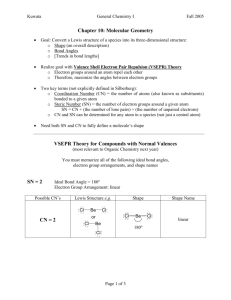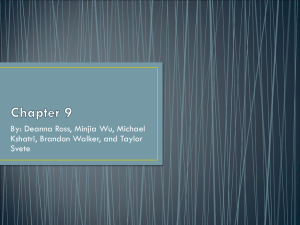Lesson 7: Molecular Geometry and Polarity text: 85-86, 103
advertisement
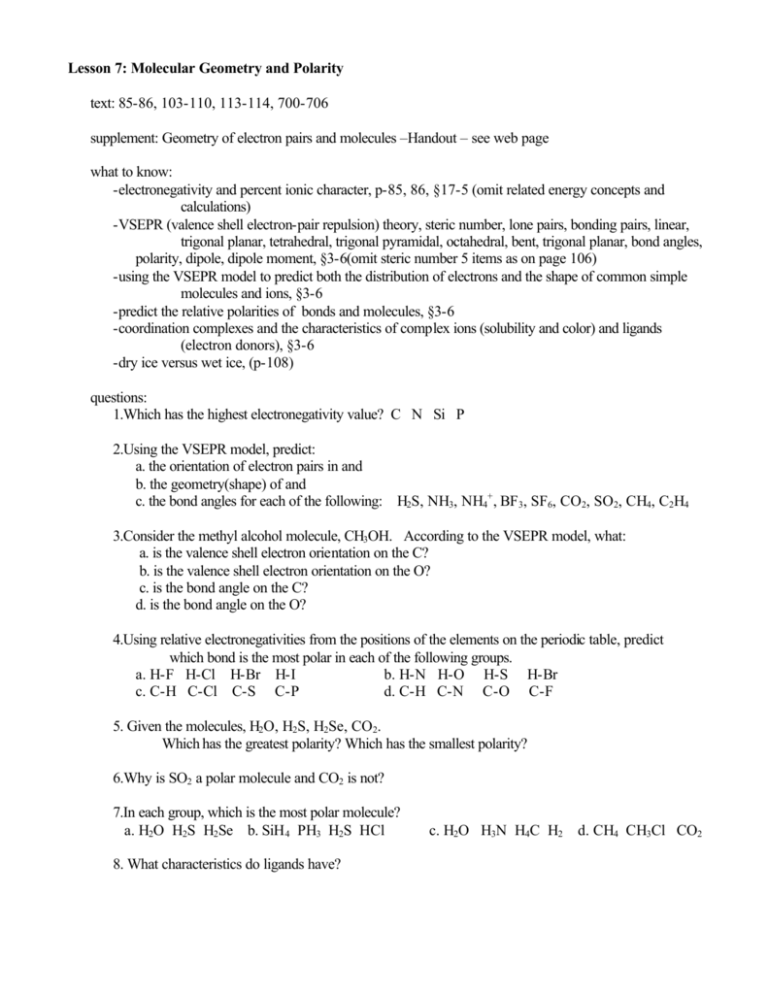
Lesson 7: Molecular Geometry and Polarity text: 85-86, 103-110, 113-114, 700-706 supplement: Geometry of electron pairs and molecules –Handout – see web page what to know: -electronegativity and percent ionic character, p-85, 86, §17-5 (omit related energy concepts and calculations) -VSEPR (valence shell electron-pair repulsion) theory, steric number, lone pairs, bonding pairs, linear, trigonal planar, tetrahedral, trigonal pyramidal, octahedral, bent, trigonal planar, bond angles, polarity, dipole, dipole moment, §3-6(omit steric number 5 items as on page 106) -using the VSEPR model to predict both the distribution of electrons and the shape of common simple molecules and ions, §3-6 -predict the relative polarities of bonds and molecules, §3-6 -coordination complexes and the characteristics of complex ions (solubility and color) and ligands (electron donors), §3-6 -dry ice versus wet ice, (p-108) questions: 1.Which has the highest electronegativity value? C N Si P 2.Using the VSEPR model, predict: a. the orientation of electron pairs in and b. the geometry(shape) of and c. the bond angles for each of the following: H2S, NH3, NH4+, BF3, SF6, CO2, SO2, CH4, C2H4 3.Consider the methyl alcohol molecule, CH3OH. According to the VSEPR model, what: a. is the valence shell electron orientation on the C? b. is the valence shell electron orientation on the O? c. is the bond angle on the C? d. is the bond angle on the O? 4.Using relative electronegativities from the positions of the elements on the periodic table, predict which bond is the most polar in each of the following groups. a. H-F H-Cl H-Br H-I b. H-N H-O H-S H-Br c. C-H C-Cl C-S C-P d. C-H C-N C-O C-F 5. Given the molecules, H2O, H2S, H2Se, CO2. Which has the greatest polarity? Which has the smallest polarity? 6.Why is SO2 a polar molecule and CO2 is not? 7.In each group, which is the most polar molecule? a. H2O H2S H2Se b. SiH 4 PH3 H2S HCl 8. What characteristics do ligands have? c. H2O H3N H4C H2 d. CH4 CH3Cl CO2



